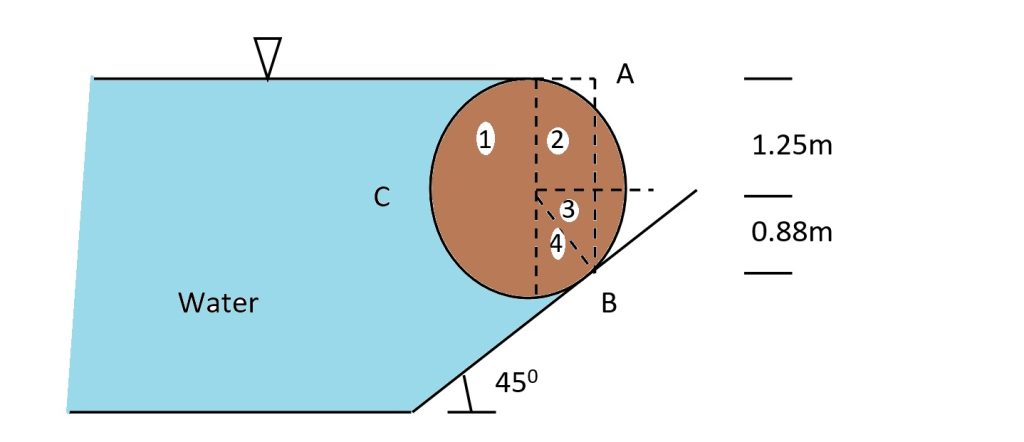Problem Statement
Water is flowing through a pipe of diameter 2.5 cm with a velocity of 0.5 m/s. Compute the discharge in m³/s and litres/s.
Solution
-
Given:
Diameter of pipe: \( d = 2.5 cm = 0.025 m \)
Cross-sectional Area: \( A = \frac{\pi}{4} (0.025)^2 = 0.000491 m^2 \)
Velocity: \( V = 0.5 m/s \) -
Volumetric Flow Rate (Discharge \( Q \)):
\( Q = AV = 0.000491 \times 0.5 = 0.000245 m^3/s \) -
Expressing \( Q \) in Litres per Second (lps):
\( Q = 0.000245 \times 1000 = 0.245 lps \)
Physical Significance & Engineering Context
Fundamental Concepts
- Volumetric Flow Rate (Q): Measures the volume of fluid passing through a cross-section per unit time. Fundamental in pipe system design, irrigation planning, and hydraulic engineering.
- Cross-sectional Area (A): For circular pipes, area \( A \propto d^2 \). Shows how pipe diameter exponentially affects flow capacity.
- Flow Velocity (v): Average speed of fluid particles. Depends on pressure gradient and pipe roughness. Critical for erosion prevention and energy calculations.
Practical Interpretation
The calculated 0.245 lps means that 245 mL of water flows through the pipe every second. Over one hour, this accumulates to 0.245 × 3600 = 882 L.
If the pipe diameter were doubled, the flow rate would increase by a factor of four (since \( A \propto d^2 \)), assuming velocity remains constant.
Measurement Techniques
Engineers use various methods to measure discharge:
- Venturi meters: Measure pressure difference to determine flow rate.
- Ultrasonic flow sensors: Use sound waves to calculate velocity and flow.
- Rotational turbine meters: Measure flow based on rotating mechanical components.
- Volumetric tank measurements: Calculate discharge by collecting water over a known time.



